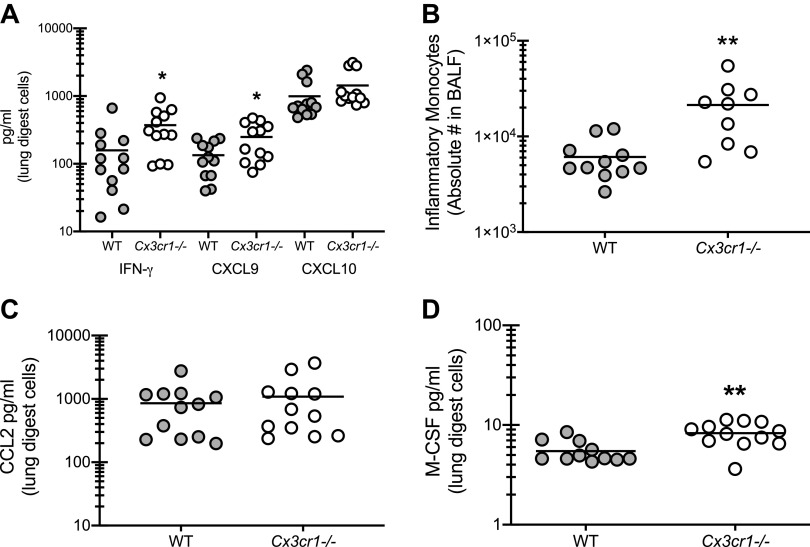Figure 5.
The absence of CX3CR1 signaling results in increased type 1 responses during fungal-associated allergic airway inflammation. A: C57BL/6 [wild-type (WT)] and CX3CR1-deficient (Cx3cr1-/-) mice were chronically exposed to Aspergillus fumigatus as described in materials and methods. Twenty-four hours after last challenge, right lungs were collected and enzymatically digested and unfractionated lung cells were cocultured with A. fumigatus conidia for 24 h at a cell-to-organism ratio of 1:1. IFN-γ, CXCL9, and CXCL10 levels were quantified in lung digest cell culture supernatants by MilliPlex. A illustrates cumulative data from 3–4 independent studies (n = 3–5 mice per group per study). *P < 0.05 (two-tailed Student’s t test). B: 24 h after the last organism challenge, lung cells were isolated by bronchoalveolar lavage, enumerated, Fc-blocked, stained with a live/dead staining kit, and stained for inflammatory monocytes (CD45+, CD11b+, Ly-6C+, CCR2+). B illustrates cumulative data from 2 independent studies (n = 4–5 mice per group per study). C and D: CCL2 (C) and macrophage colony-stimulating factor (M-CSF; D) levels were quantified in lung digest cell culture supernatants by MilliPlex or ELISA. C and D illustrate cumulative data from 3–4 independent studies (n = 3–5 mice per group per study). **P < 0.01 (two-tailed Student’s t test).

